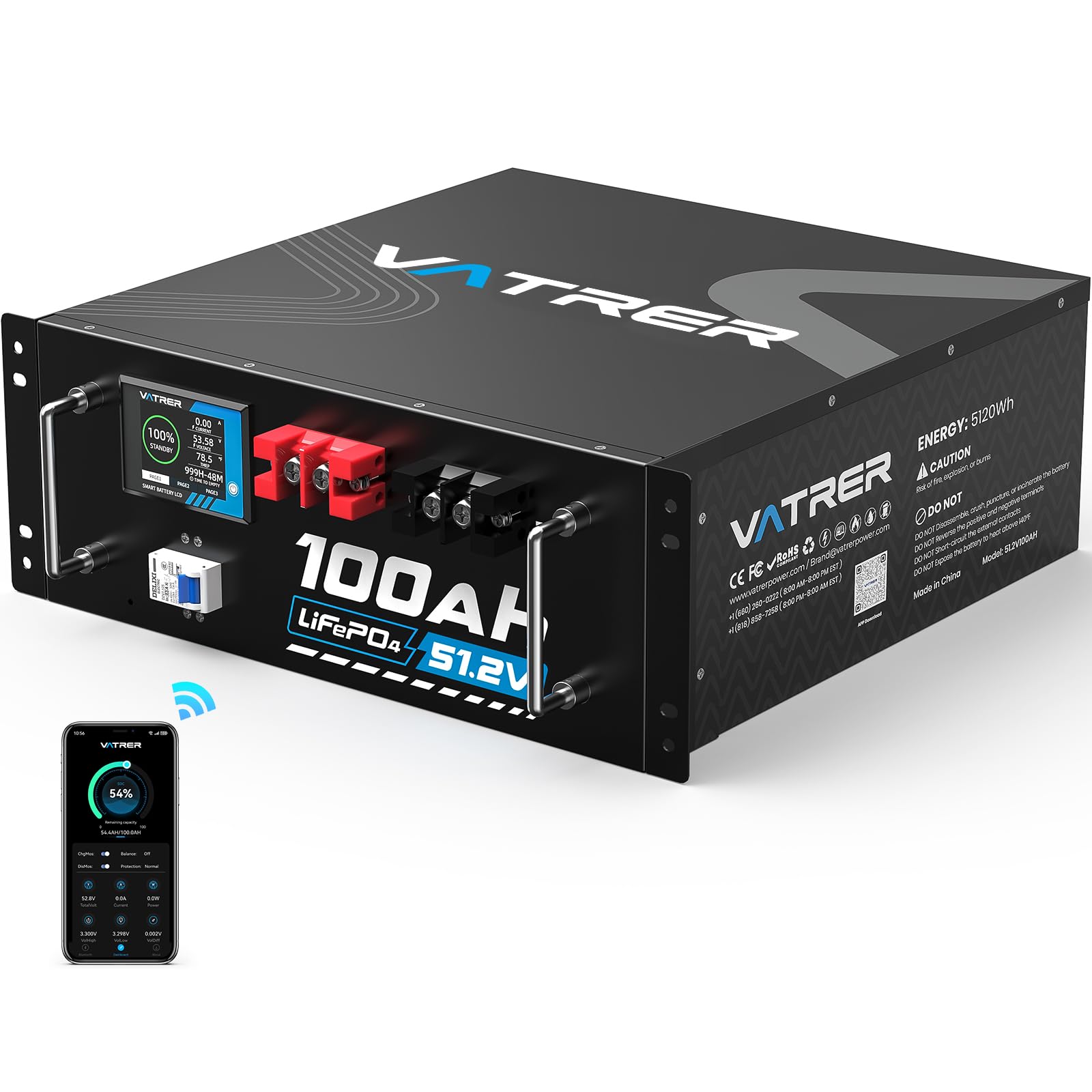

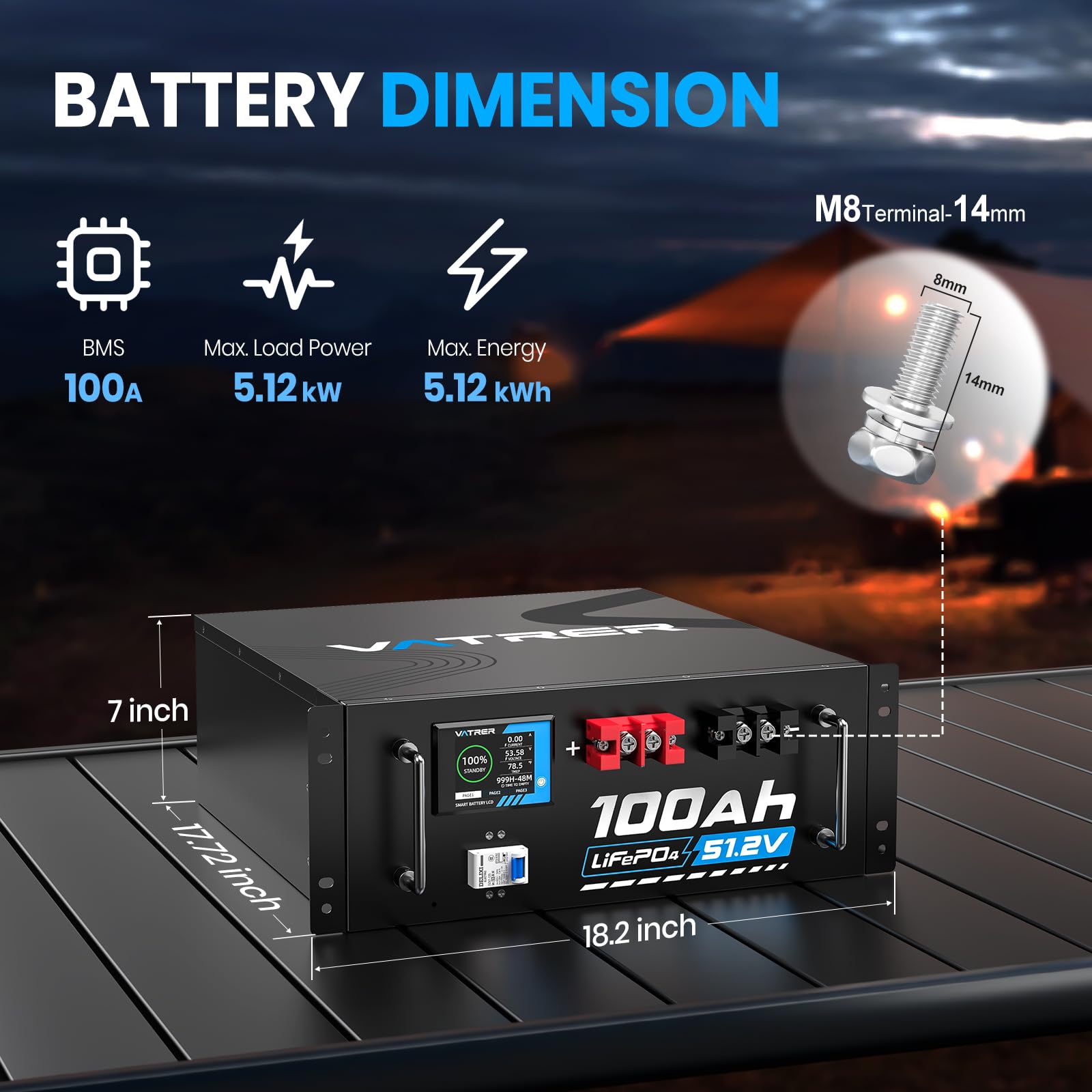


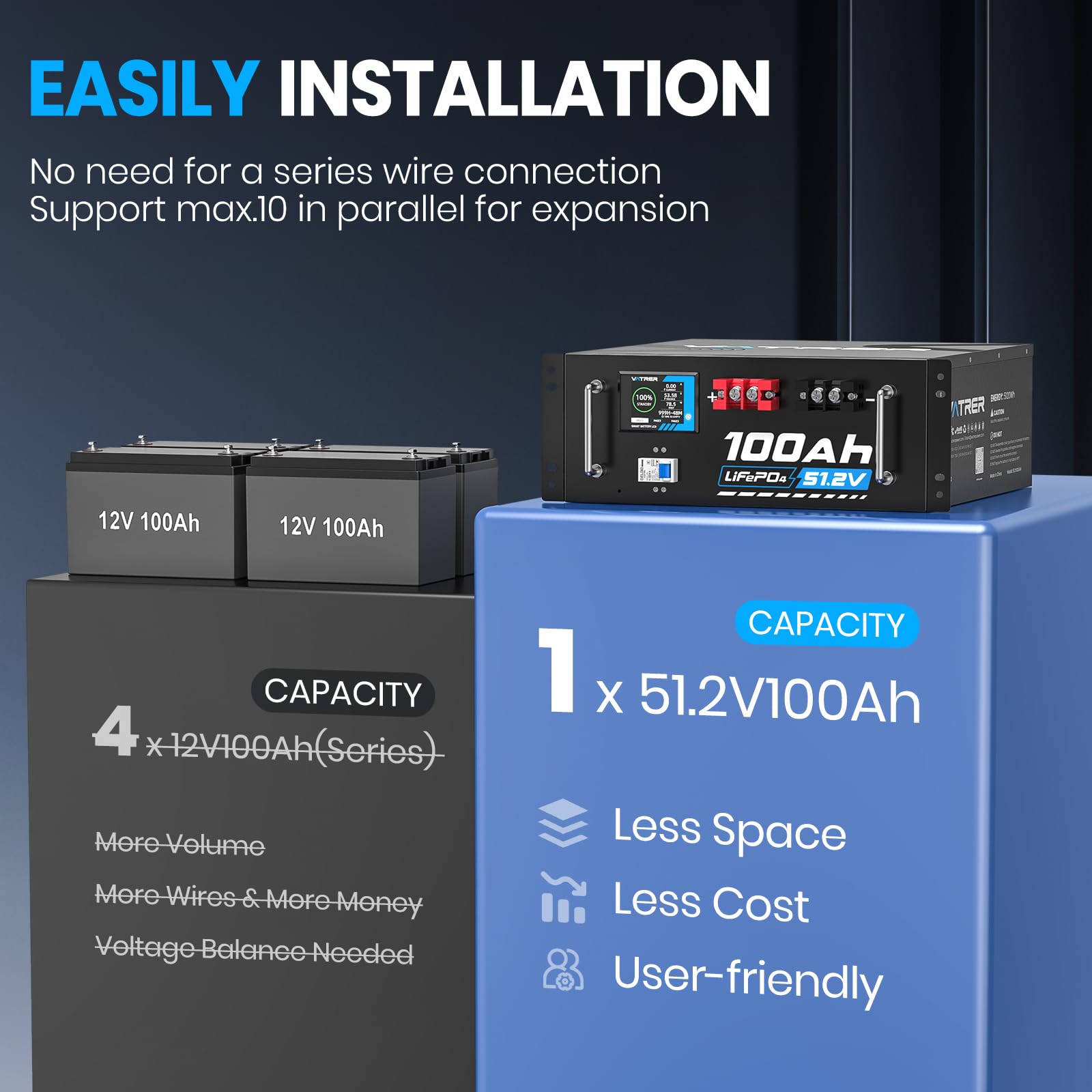
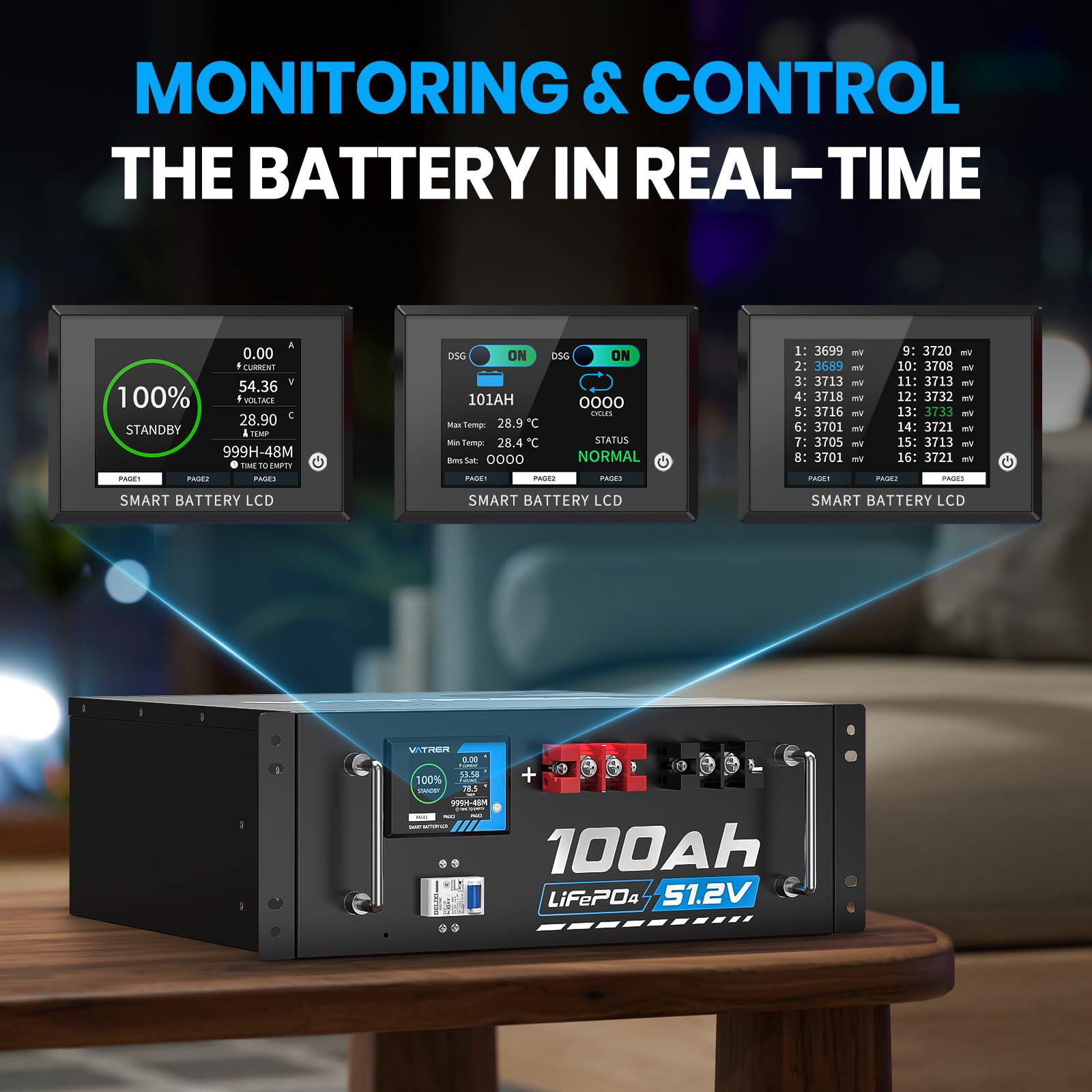

⚡ Power Your Adventures with Confidence!
The 48V 100AH Lithium LiFePO4 Battery is a high-performance energy solution designed for solar systems and off-grid applications. With a robust 100A built-in BMS, a user-friendly touch display, and mobile app connectivity, this battery offers exceptional longevity with over 5000 cycles, making it a smart investment for sustainable energy enthusiasts.
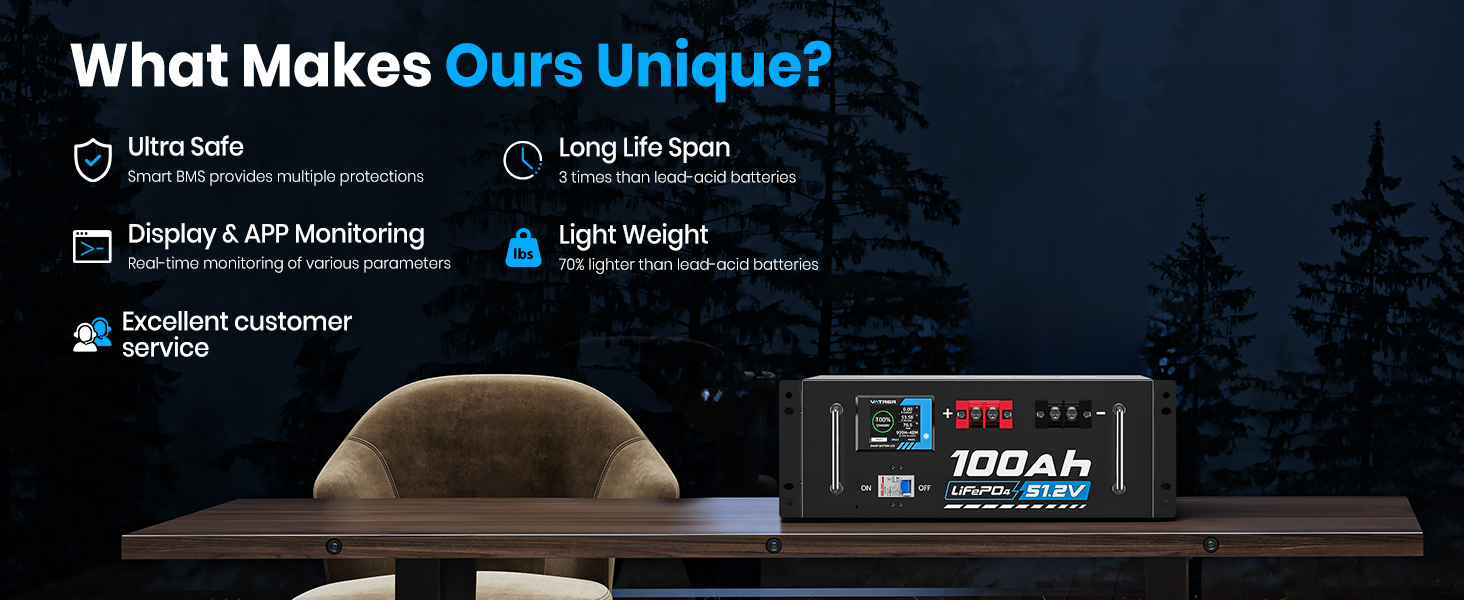
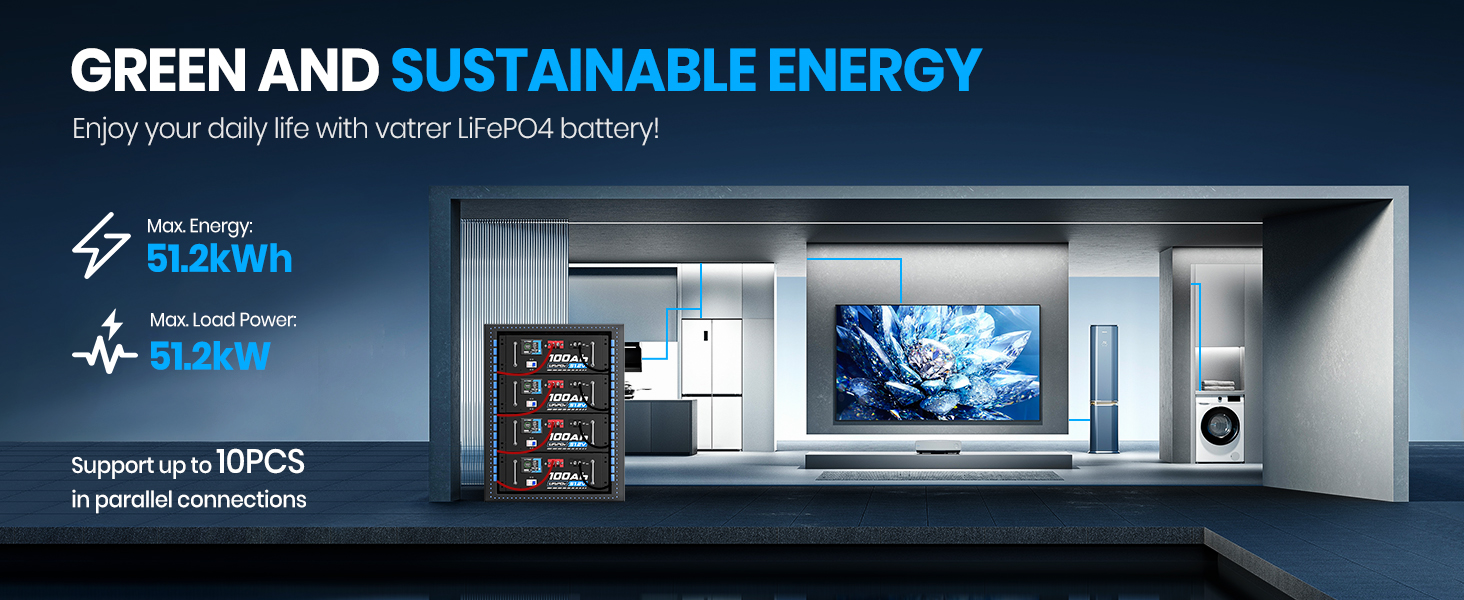
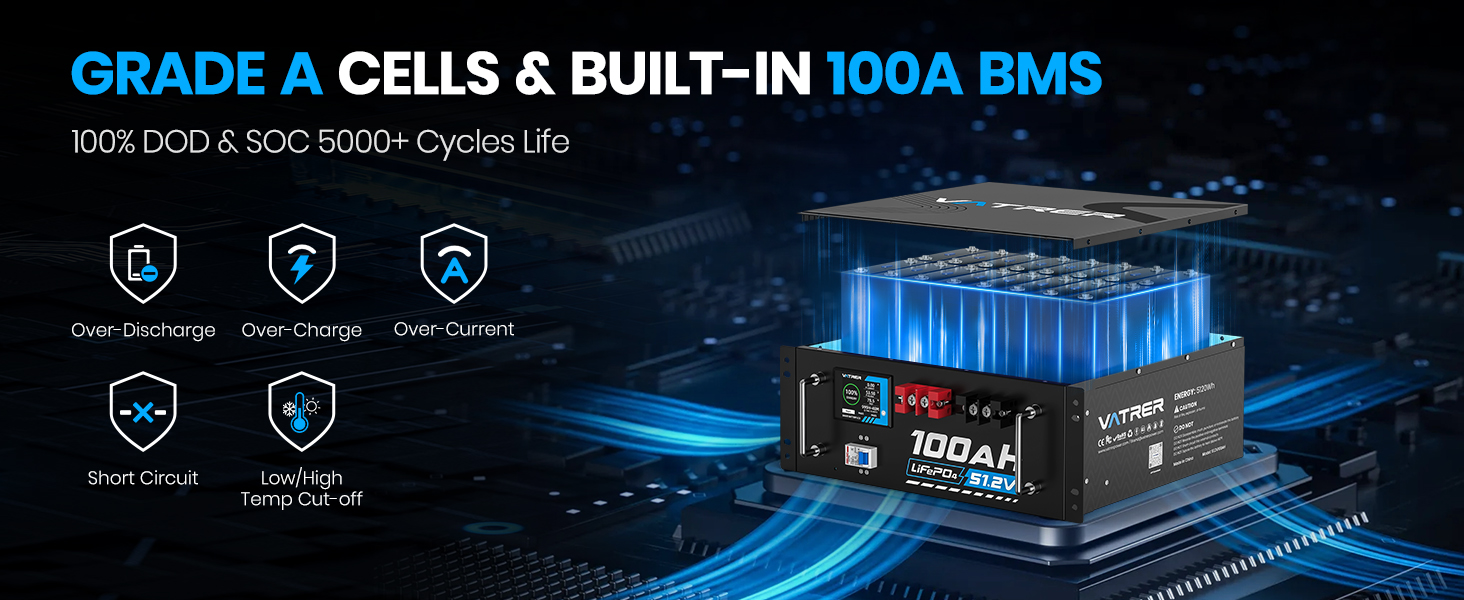
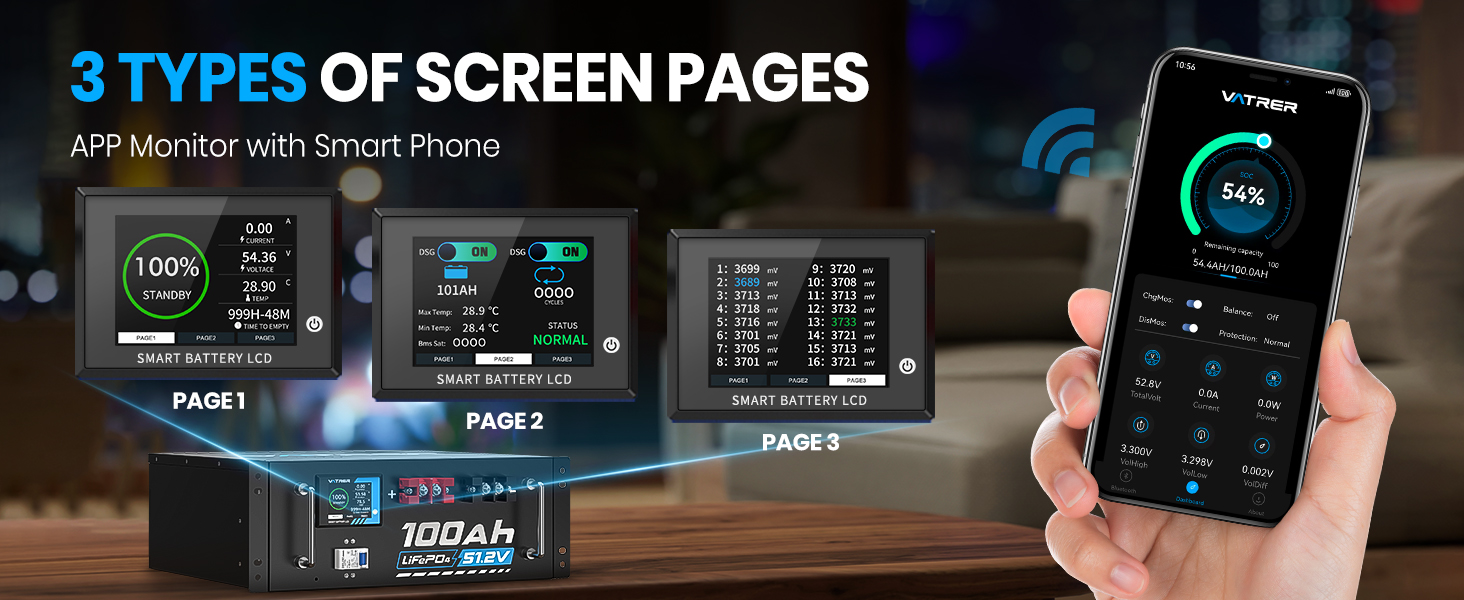

| Manufacturer | VATRER POWER |
| Brand | VATRER POWER |
| Model | 51.2V 100Ah |
| Item Weight | 102.5 pounds |
| Country of Origin | China |
| Item model number | 51.2V 100Ah |
| Batteries | Lithium Ion batteries required. |
| Manufacturer Part Number | 48V100Ah02 |
| Amperage | 100 Amps |
| Voltage | 51.2 Volts |
S**C
Still great batteries at a great price
Minor edit after 4 more months of constant use: No issues at all with the Vatrer batts, i just upped the bulk charge a little from 55.2v to 56.0v and bulk charge time to 1 hour+ to help the onesie slowpoke cell in each pack with a bit more internal resistance than the others (found in every 16-cell rack battery made on planet Earth) catch up with its fellows to full-charge and to better reset the BMSs to more even 100% state-of-charge readouts. Still working flawlessly all around ------- I really like these Vatrer batteries, got two of them and they've been operating flawlessly for about a month now, powering a 3000W transfer-circuit bank through an off-grid EG4-3000 inverter/charger and solar panels in the totally spotty sunshine/clouds/storms of the rural Southeastern USA. No comm cables between the Vatrer batts and inverter/chargers but manually input bulk/absorption time/float charges on the EG4 are seamlessly accepted by these paralleled Vatrer BMSs (I use 55.2v, 15 minutes, and 53.6v respectively based on expert online opinions). These values differ from the Vatrer manual, but the only issue I had since operating them was once early on at maximum charge voltage from the manual which drove one of the cells in one of the batteries to over-voltage state causing the BMS to shut that battery down until the internal passive balancer leveled the cell voltages out and reduced the over-voltage cell to normal resting max charge state. This phenomenon is totally normal across the whole LiFePO4 battery universe and not a Vatrer problem (check online forums for more info). Since downtuning the charging values a little off of maximum from the inverter/charger, these batteries have performed flawlessly with no BMS overrides or shutdowns, and I see only a few millivolts of unbalance across all 16 cells each if allowed to rest and passive-balance from time to time, which is exceptionally good for any LFP battery out there. The BMS also seems to seamlessly cross back-and-forth between charging and discharging with no hiccups in the lousy on/off solar power conditions we have here in the SE swamps, and run all the connected appliances with no issues ever: microwaves, internet/computer devices, portable air conditioners, etc, all run well with no problems from the Vatrer BMSs switching back and forth between charge and discharge constantly all day long. Very happy with these batteries, and I intend to get one or two more in the near future.
P**S
Great option for a great price.
This battery is a great option for a solar system. This unit is not UL listed, as of now, but this works great for off grid systems. The unit shipped quickly, was well packed and arrived safe and sound.The built in display makes it easy to see the condition of the overall battery system as well as individual cell voltages. True, this doesn't have built in communications but for the intended use, you probably don't really need it.Vatrer does offer a wall mount system with communication if you really want/need that.
R**N
Cells are staying well balanced
I purchased 2 of these batteries to expand my off grid home system. My system is mainly EG4 equipment. I have 3 EG4 wall mount batteries that communicate with the inverter. Unfortunately these batteries don't have and option for coms. That hasn't been an issue though. They top up around the same time.I have noticed that these rack batteries have kept the cells very well balanced. Better than the wall mounts. I love the screen. It slow you to easily check the cell voltages and highlits the high and low cells which make for quick and easy checks. I get tired of apps and web connected everything due to updates and flawed UIs. Usualy weekly I do a quick check of the system using the screens on all the equipment.I give it 5 stars for the price I paid at the time for the features it has. Going forward, battery princess are getting more affordable. If you need coms and not the screen Ecoworthy has units for $850 as of Jan. 2025. I think that is a compelling value.
C**S
Great battery but non-standard volts
The battery performs great. The unit originally shipped with only one set of power cables, which was difficult because of the special connections. But they sent another set (for free) to make it right - to connect to a charge controller and an inverter. The reason for only four stars is the difficulty in finding equipment that will work with the 51.2v capacity - which is higher than a 48v and thus requires a non-standard charge controller (still haven't found one, despite trying several). If charging from the grid or a generator, no problem. In the meantime, I just configured my panels to be within charge tolerances and charge directly from the panels with me being the "controller" (which is a pain, but at least I can say the battery is working perfectly).
Trustpilot
1 week ago
1 month ago